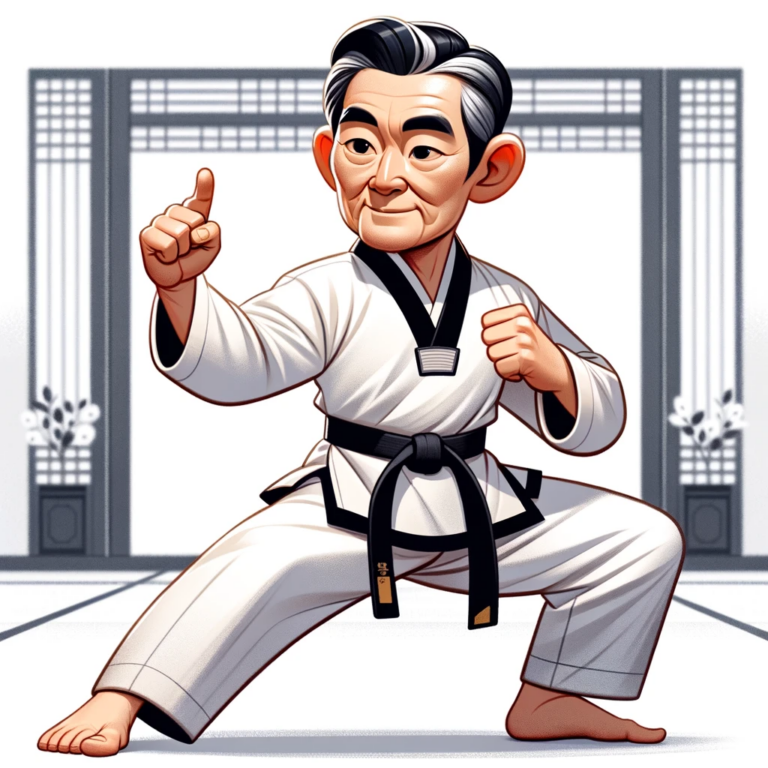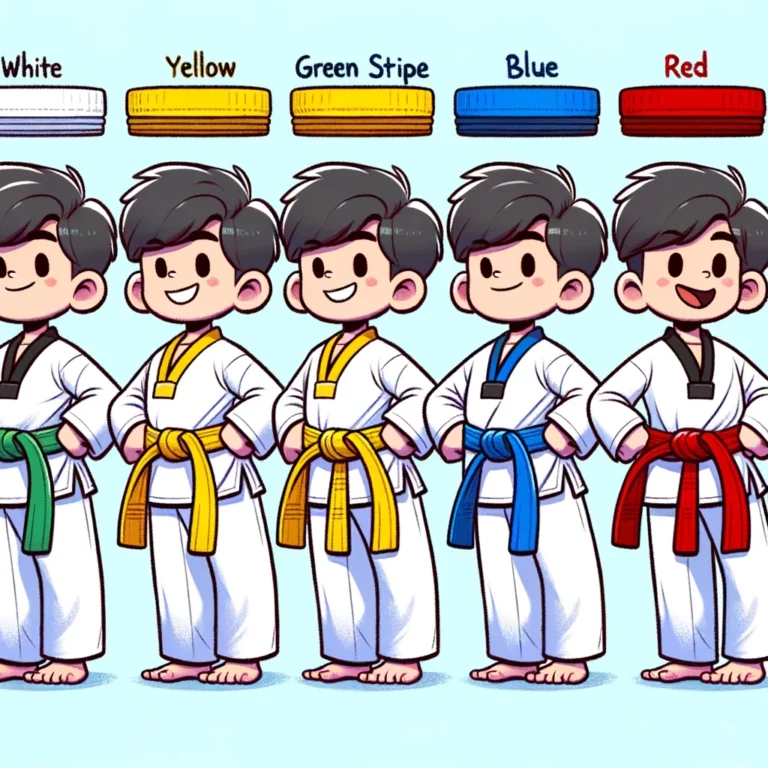Patterns and Poomsae in Taekwondo: Exploring the Essence of Forms
How Many Patterns or Poomsae are there in Taekwondo? There are 24 Patterns to Poomsae in Taekwondo. Patterns and poomsae are integral components of Taekwondo, representing a unique aspect of this martial art. These intricate sequences of movements encompass the essence and spirit of Taekwondo, allowing practitioners to embody the fundamental principles and techniques. Patterns, also known as tul or hyeong, are a series of predetermined movements performed against an imaginary opponent. They serve as a comprehensive training tool, enabling practitioners to practice various techniques, stances, and applications systematically and consistently. On the other hand, poomsae, similar to patterns, are choreographed forms performed as a solo routine, emphasising proper execution, precision, and fluidity in movements. In essence, patterns and poomsae in Taekwondo provide a platform for practitioners to refine their skills, cultivate discipline, and express mastery of this ancient martial art.
The origins of patterns and poomsae in Taekwondo can be traced back to Korea’s rich history and martial arts traditions. As Taekwondo evolved from various indigenous Korean martial arts, the practice of patterns and Poomsae became intertwined with the nation’s cultural heritage. The design and structure of patterns and Poomsae often reflect historical events, philosophies, and aspects of Korean culture. The evolution of patterns and poomsae in Taekwondo can be seen in incorporating new techniques and movements and adapting to the changing needs and advancements in martial arts. As practitioners delve deeper into studying Taekwondo patterns and poomsae, they gain a greater understanding of its historical significance and appreciate the depth and beauty of this art form.
• Patterns, or tul or hyeong, are a series of predetermined movements performed against an imaginary opponent.
• Poomsae are choreographed forms performed as a solo routine, emphasising proper execution, precision, and fluidity.
• Both patterns and Poomsae are comprehensive training tools for practitioners to practice various techniques, stances, and applications.
• The origins of patterns and poomsae can be traced back to the rich history of Korea and its martial arts traditions.
• The design and structure of patterns and Poomsae often reflect historical events, philosophies, and aspects of Korean culture.
• Patterns and Poomsae have evolved to incorporate new techniques and movements that adapt to the changing needs of Taekwondo.
• Studying patterns and Poomsae allows practitioners to understand Taekwondo’s historical significance better.
Understanding the Art: Unveiling the Essence of Taekwondo Patterns and Poomsae
Patterns and poomsae are fundamental components of Taekwondo, representing the essence and beauty of this martial art. Taekwondo patterns, also known as tul, hyeong, or teul, are a series of pre-arranged movements performed in a specific order. They serve as a means to practice and perfect various techniques, such as strikes, blocks, and stances. Each pattern simulates different combat scenarios and enhances a practitioner’s skill, speed, balance, and focus.
On the other hand, Poomsae can be seen as the embodiment of Taekwondo’s philosophy and principles. It is a set sequence of movements with a well-defined rhythm and pace. Poomsae emphasizes the harmonious integration of body, mind, and spirit, promoting discipline, self-control, and confidence. Through poomsae, practitioners can develop a deep understanding of the art, refine their techniques, and cultivate a strong mental fortitude. Whether a beginner or an advanced practitioner, studying Taekwondo patterns and poomsae is crucial in attaining proficiency and mastery in this dynamic martial art.

The Origins: Tracing the Historical Roots of Taekwondo Patterns and Poomsae
The historical roots of Taekwondo patterns and poomsae can be traced back to ancient Korea. It is believed that the origins of these forms can be found in the martial arts practices of the Three Kingdoms period, which lasted from 57 BC to 668 AD. During this time, various kingdoms on the Korean peninsula developed their combat techniques, which later became the foundation for what we now know as Taekwondo.
One particular kingdom, Silla, played a significant role in developing Taekwondo patterns and poomsae. Silla was known for its elite warrior class, the Hwarang, renowned for their exceptional martial arts skills. The Hwarang practised a unique form of martial arts called Subak, which incorporated kicks, strikes, and various defensive techniques. It is believed that the forms and stances used in Subak laid the groundwork for the patterns and poomsae we see in modern Taekwondo today.
The Evolution: Examining the Development and Adaptation of Patterns and Poomsae in Taekwondo
Patterns and poomsae in Taekwondo have undergone a significant evolution throughout the years. As martial arts evolved and spread to different parts of the world, its patterns and Poomsae adapted to reflect each region’s unique cultural influences and training methods. This evolution has allowed Taekwondo to remain dynamic and relevant in the modern age.
One notable aspect of the evolution of Taekwondo patterns and poomsae is incorporating techniques from other martial arts. Over time, practitioners and masters have recognized the value of integrating techniques from disciplines such as karate, boxing, and Muay Thai. This cross-pollination of techniques has enriched the patterns and poomsae, making them more versatile and practical in combat situations. Additionally, including these techniques has expanded the repertoire of movements, providing practitioners with a broader range of options for self-expression and personalization.
An In-depth Analysis: Breaking Down the Components and Techniques within Taekwondo Patterns and Poomsae
Patterns and poomsae in Taekwondo are not merely a series of movements; they reflect the essence of this martial art. When breaking down the components and techniques within these forms, it becomes evident that every movement has a purpose and conveys meaning. Each Poomsae pattern consists of a specific sequence of defensive and offensive techniques, footwork, stances, and transitions. These elements work together to simulate real combat situations, embodying the principles of Taekwondo in a structured and disciplined manner.
One key component of patterns and poomsae is the use of different stances. Stances are the foundation for executing techniques and provide stability, balance, and power. Taekwondo has numerous stances, each with its unique purpose and application. Some common stances include the front, back, and horse stances. The choice of stance depends on the specific technique being performed and the desired outcome. Practitioners can effectively execute the techniques within patterns and poomsae by mastering and transitioning seamlessly between these stances.

What are patterns and poomsae in Taekwondo?
Patterns and poomsae are a set sequence of movements and techniques that practitioners of Taekwondo perform in a specific order. They are a crucial part of training and help develop various skills like balance, coordination, and precision.
Why are patterns and poomsae important in Taekwondo?
Patterns and Poomsae serve several purposes in Taekwondo. They help practitioners refine their techniques, develop muscle memory, and improve overall performance. Additionally, they allow students to demonstrate their knowledge and understanding of different methods and stances.
What is the essence of Taekwondo patterns and poomsae?
The essence of Taekwondo patterns and poomsae lies in their combination of fluidity, power, and precision. They require practitioners to perform movements with grace and control while maintaining a solid and focused mindset.
What is the historical origin of Taekwondo patterns and poomsae?
The historical roots of Taekwondo patterns and poomsae can be traced back to ancient Korean martial arts, such as Taek Kyon and Subak. These forms of combat training incorporated various techniques and movements that eventually evolved into the patterns and Poomsae seen in modern-day Taekwondo.
How have patterns and poomsae evolved in Taekwondo?
Over time, patterns and poomsae in Taekwondo have undergone evolution and adaptation. They have been refined and standardized to ensure consistency and promote uniformity within the martial arts. New patterns and poomsae have also been developed to meet Taekwondo practitioners’ changing needs and requirements.
What are the components and techniques within Taekwondo patterns and poomsae?
Taekwondo patterns and Poomsae comprise various components and techniques, including stances, strikes, blocks, kicks, and transitions between movements. Each pattern or poomsae incorporates a unique combination of these elements, showcasing the diversity and versatility of Taekwondo techniques.







